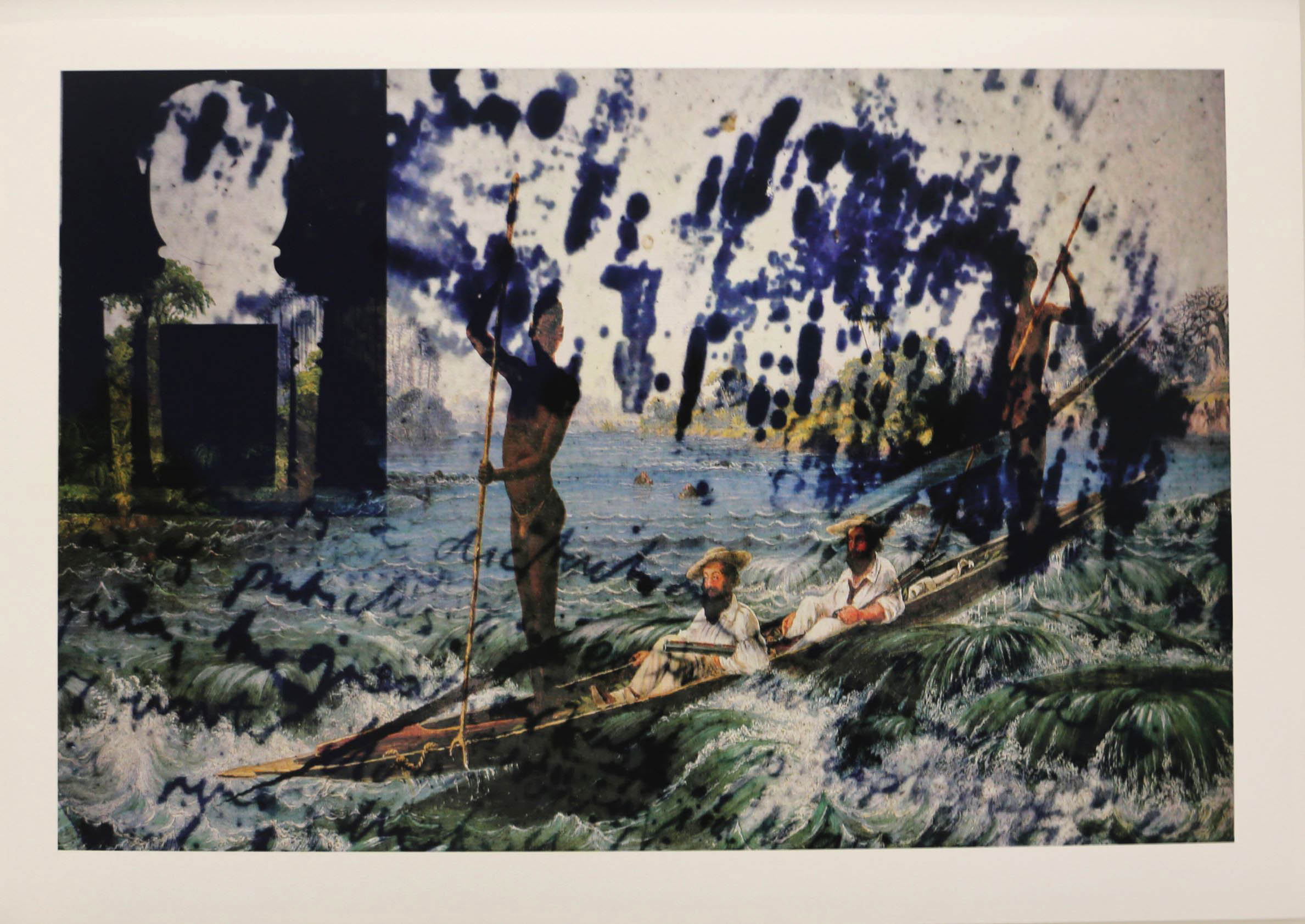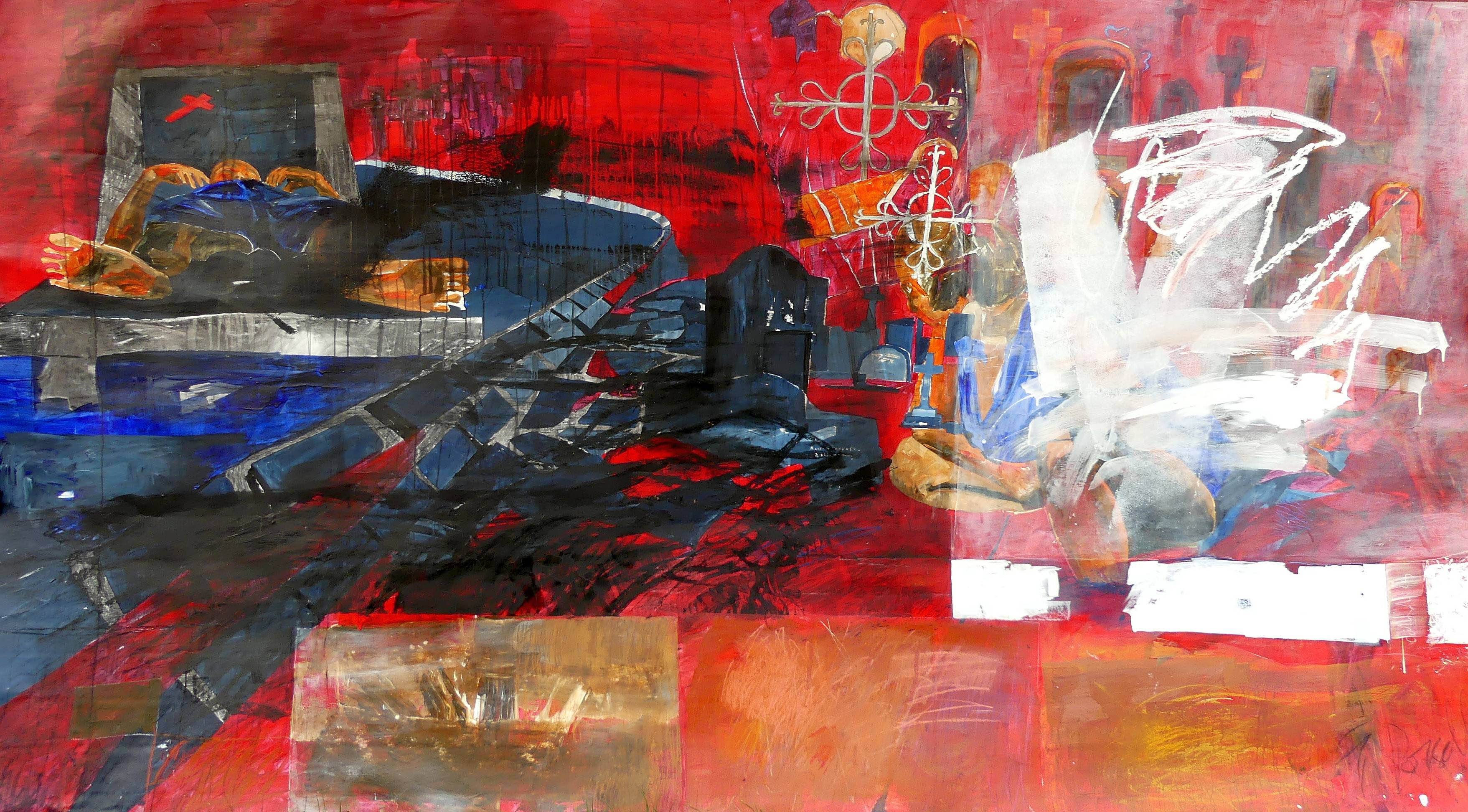Richard Mudariki The Passover draws on Da Vincis The Last Supper. Its Robert Mugabes last supper and at his table are figures such as Nelson Mandela, Queen Elizabeth II, Muammar Gaddafi and the Pope
Painting has taken on a different beauty at the Zeitz Museum of Contemporary Art Africa in Cape Town. Its show, Five Bhobh — Painting at the End of an Era, curated by Tandazani Dhlakama, coalesces works by 29 Zimbabwean artists and examines painting as commentary to the sociopolitical.
Five bhobh (bob) is the local fare to travel a certain distance by minibus taxi in Zimbabwe, according to the Zeitz website. The ritual is similar in various African countries — passengers will step into the Kombi (Zimbabwe), trotro (Ghana), dala dala (Tanzania) or matatu (Kenya). Zeitz describes it as follows. Passengers will gather their coins and pass them forward to the driver or taxi conductor. Once all passengers have paid their dues, the journey begins. Everyone relaxes and gossips, listens to music, reads or dreams as they journey to work, school, home.
The minibus taxi is an allegory for the nation of Zimbabwe, with the artists as its passengers who comment with calculated gestures, according to Zeitz.
The exhibition is divided into sections: land, politics, memory, patonaz, spirituality, kuDiaspora and shemurenga.
Shemurenga is a play on the Shona word chimurenga, denoting a struggle, movement or revolution and draws from Shereen Essof’s book Shemurenga: The Zimbabwe Women’s Movement 1995-2000. This part of the exhibition seeks to acknowledge women’s struggle for space and active voices in society. It includes works by Tatenda Magaisa, Helen Teede, Kresiah Mukwazhi, Janet Siringwani-Nyabeze and Shalom Kufakwatenzi.

Words: Internationally renowned artist Berry Bickle’s works challenge colonialism in the subcontinent. Her ‘Victorian Series’ of seven paintings have script over images of the Victoria Falls
Five Bhobh acts as a reference library and demonstrates the ability to explore a subject in great depth. The artists test the limits of what painting is by outrunning classic ideas about the medium and pushing it past expected angles.
“Painting has a long history in Zimbabwe. In its broadest sense, it can be defined as the application of pigment on a surface or the manipulation of materials that are traditionally associated with painting,” Zeitz writes.
The exhibition is a catalyst for expanding our imaginations about the medium of painting and how it can be used as a language. The artists approach the medium in particular and specific ways.
They mirror and contrast each other and create collaborative expressions of the state of the nation of Zimbabwe.
Each artist has chosen their angle and framing; how expressive or recognisable the work is going to be. Is it microscopic or macroscopic? Is the work responsive or does it stand independently? How dynamic or static is it? There are an endless number of decisions, with different ways of illuminating the different aspects of the art form.
With swirling, brushstrokes and strong bright hues, Cosmos Shiridzinomwa depicts Mugabe’s Closet in a 139x136cm oil painting. A single elaborate, patched jacket hangs outside an open closet. The closet is filled with books, a few of which attempt to conceal a skull. The jacket, books and skull take on new meaning in relation to former president Robert Mugabe’s power. Shiridzinomwa is toying with elements of rebellion.

Past: Gillian Rosselli’s works also explore Zimbabwe’s colonial past. Her ‘Colonial Cemetery’ continues with this theme.
Troy Makaza’s Camo Series operates across multiplicity of textures, shapes and forms. He uses silicone-infused paint to create hangings that drape in slick glory. They draw on principles of painting and sculpture.
“As an artist, I never wanted to be pigeonholed or to be following any particular artist,” he said. “This particular medium allows me to continue discovering new
things both in its technical possibilities and creative expression. It enables me to comment on both painting and sculpture, as well as syncretism of contemporary culture in Zimbabwe,” he told Between 10 and 5.
Wallen Mapondera uses threadbare canvas without a frame — a commentary on landscape, urban planning and migration. Textiles, wax, paper, collage and waxed thread defy obvious categorisation and are read as paintings.
Portia Zvavahera fuses printing ink and oil bar on canvas, irradiating the ways in which Zimbabwe continues to acknowledge the divine through the world of dreams, ancient customs and rituals.
With 29 strong artists, the exhibition has moments that reel you in and ones that disorient you. Its strength lies in the balance of the traditional and the experimental.
The exhibition also features Admire Kamudzengerere, Anthony Bumhira, Berry Bickle, Charles Bhebe, Duncan Wylie, Gareth Nyandoro, Gillian Rosselli, Greg Shaw, Isheanesu Dondo, John Kotzé, Kudzanai-Violet Hwami, Kufa Makwavarara, Mostaff Muchawaya, Misheck Masamvu, Percy Manyonga, Rashid Jogee, Richard Mudariki, Simon Back, Tawanda Reza and Thakor Patel.
The exhibition runs until March 31